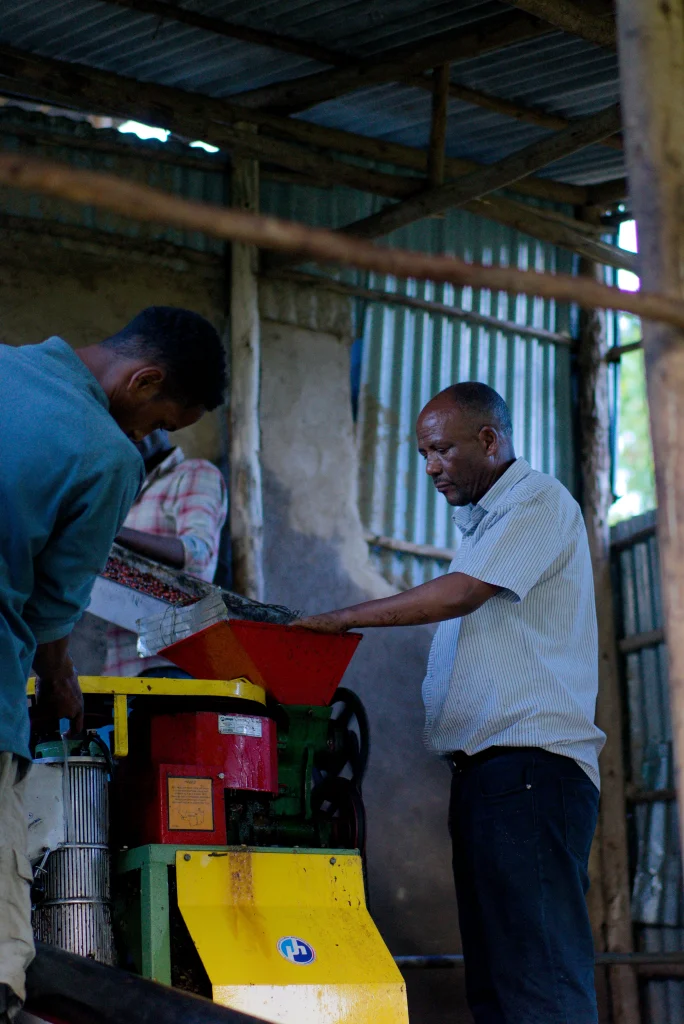Ethiopia
Tatmara
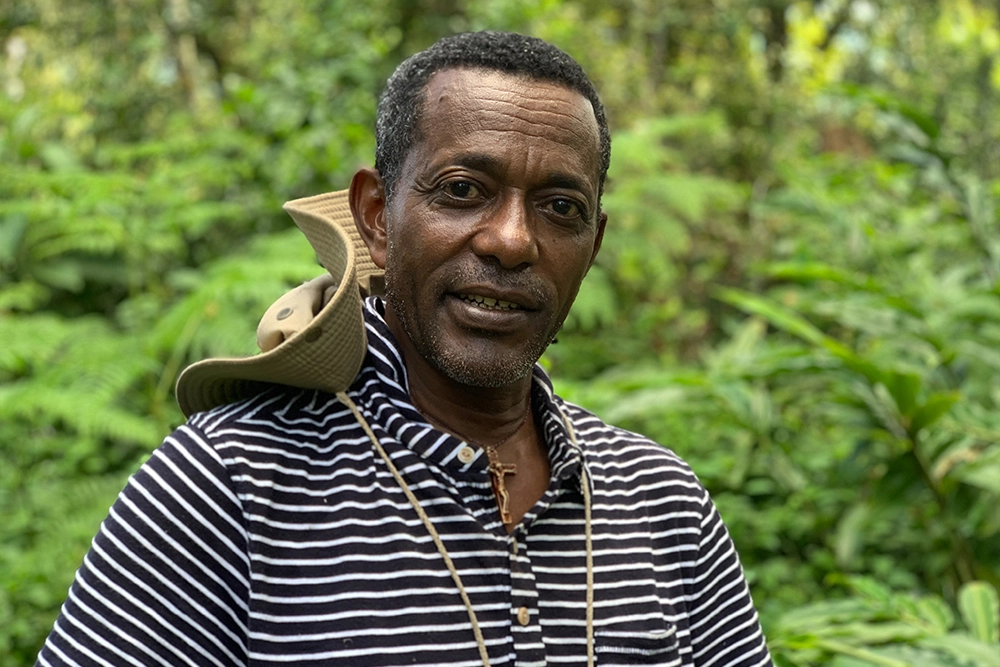
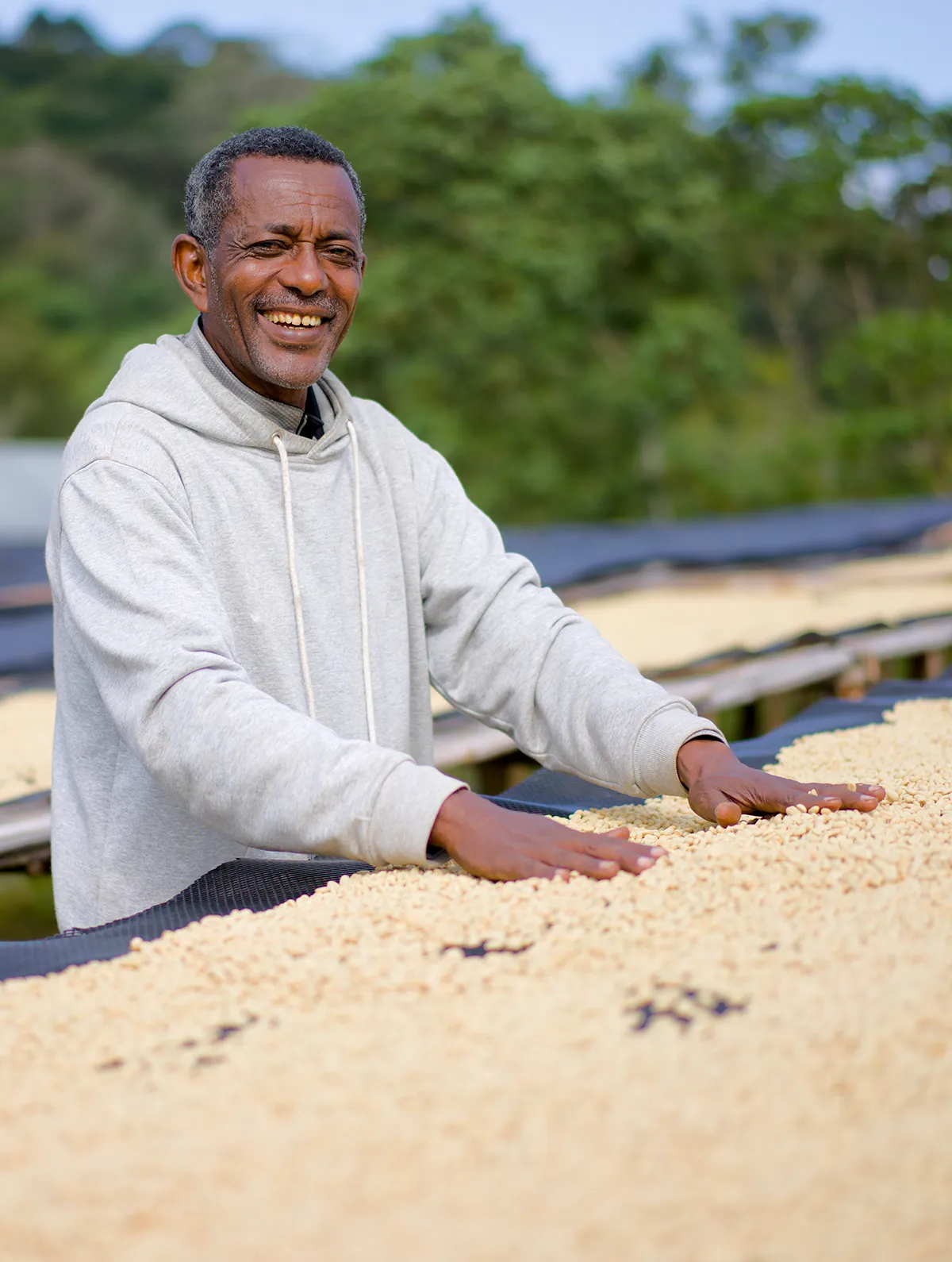
About Tatmara
Negussie Tadesse is the owner of Tatmara. He leased the land in 2008 and started planting coffee in 2010. The 82 hectare farm is basically a native forest. Apart from some small scale honey production, there is wild cardamom, long pepper and fruits growing amongst the coffee, which also attracts wild animals such as buffalo, baboons, pigs and birds who either eat coffee cherries or can break the coffee trees.
Negussie does not use any agricultural inputs such as synthetic fertilisers or agrochemicals. The only work he is doing on the farm is to cut weeds manually in order to control the weeds and also make cover for the ground (mulch) to prevent the soil from drying out. He also prunes the coffee trees and renews some of the old coffee trees that were planted when he established the farm.
The native forest canopy produce leaves that naturally falls to the ground. The soil is therefore rich in organic material and microorganisms which help feed the coffee plants. We believe this is an important contributing factor to the high quality coffees that this farm is able to produce.
Good cultivars (74110 and 74112), shade cover and ideal climatic growing conditions also help create unique coffees that in our opinion are unmatched outside of Ethiopia.
The First Visit
My first visit to Tatmara was in the end of 2018. The Ethiopian government had recently opened up for smaller coffee producers to be able to export their own coffee directly, bypassing the local coffee exchange system. When I heard this I immediately reached out to several companies working with coffee exports / import from Ethiopia and asked if they knew any small to mid sized farms that we could work more directly with. The Idea was to create a similar working model as we have implemented with farmers in Latin-America, where we over time can influence how the coffees are produced in order to get better quality control at farm level.
Eventually I went on a trip to Ethiopia in order to visit several farms of interest, but after two weeks of traveling there were only few farms and farmers that gave me a good feeling that we could actually establish a good relationship with common long term goals of lifting the value and quality of their coffees. Negussie was one of these farmers, and his farm turned out to be one of the most beautiful coffee farms I had ever visited. Negussie was also working with Belco, a french coffee and cacao importer. Their Ethiopian office collaborates with farmers like Negussie in order to raise the quality of their coffees by offering trainings and a market for their coffee.
I was mainly looking to purchase washed coffees in Ethiopia yet Negussie only produced natural processed coffees. However I completely fell in love with Negussies farm and his attitude. I therefore decided to purchase some coffees anyway thinking that changing the way coffee is processed is really simple and can be done over time.
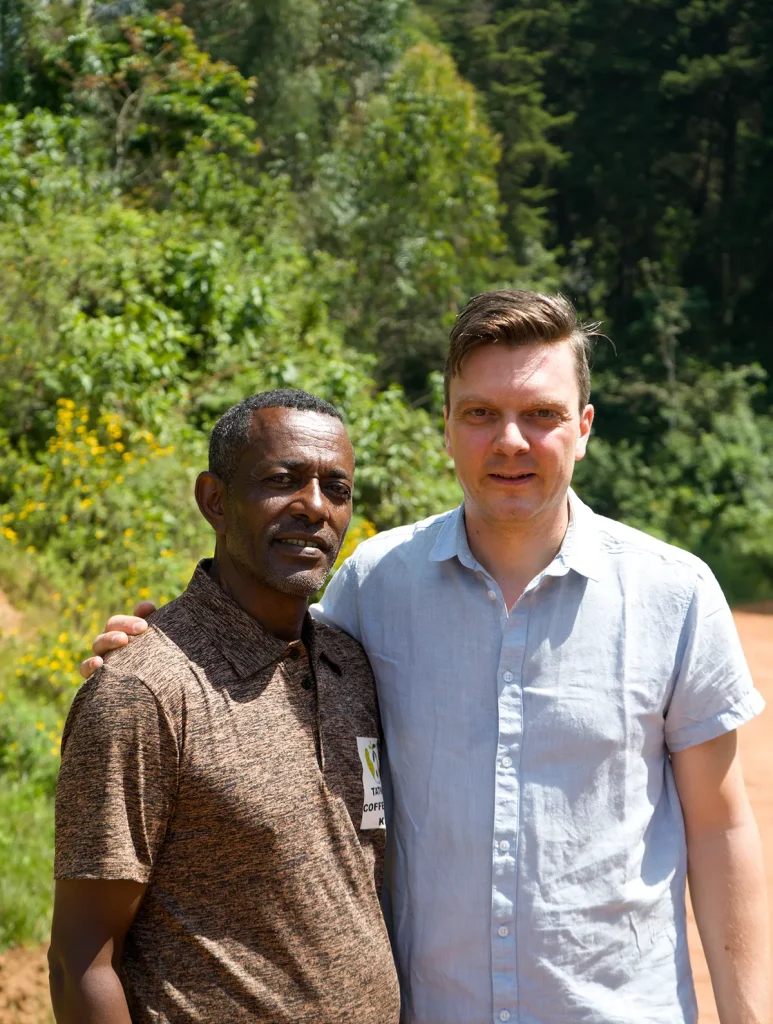
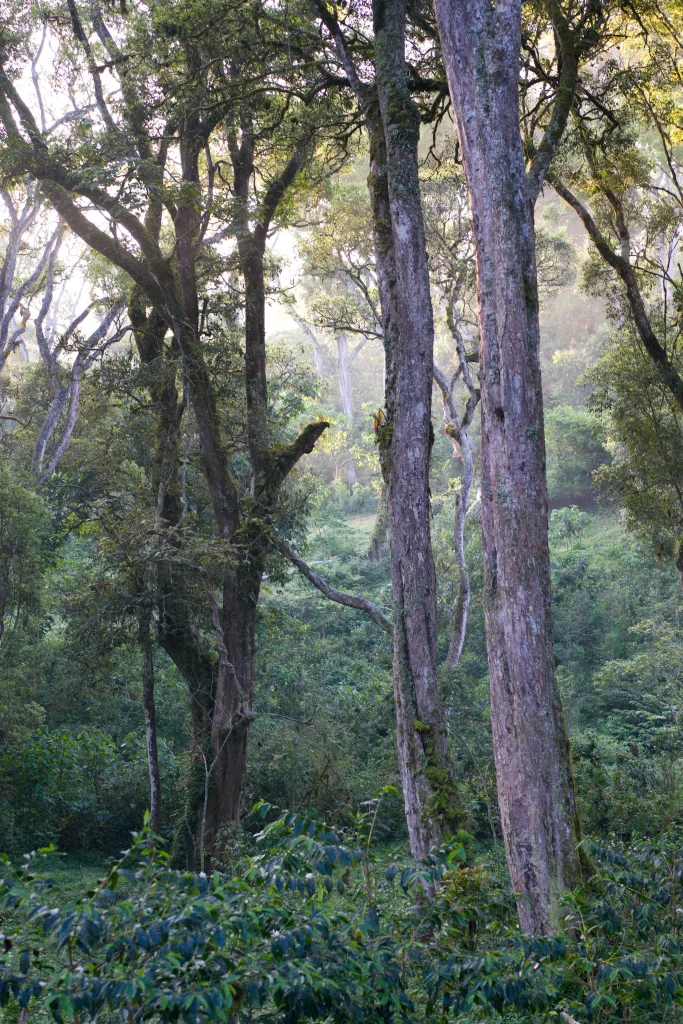
The Most Beautiful Farm
Tatmara is one of the most beautiful coffee farms I have ever visited. It is literally a native forest that over time has been thinned out by locals who have chopped down trees for fiewood and building materials. Negussie grew up on these lands and after spending years working an office job in Addis Ababa, he decided to lease the land he grew up on in order to protect the forest and to establish a coffee plantation inside the forest.
He took over the land in 2008 and started planting coffee in 2010. Having grown on a coffee farms himself, Negussie understood the importance of shade trees and keeping the soil fertile. He therefore decided to not only plant coffee but also to re-plant native forest trees in areas of where there was not enough shade.
Although coffee is a forest tree and is native to Ethiopia, the forest is still a hostile environment for young coffee seedlings. Because the soil is extremely fertile, weeds will grow aggressively and the competition for nutrients, light and water is fierce. Establishing new trees is quite difficult, especially when you work without synthetic fertilisers, or herbicides. Negussie and his workers have to manually cut weeds with machete every two months, which basically means it is a weekly task on an 82 hectare farm in order to ensure the seedlings survive,
The result is one of the wildest and greenest coffee farms I have ever been to. Walking inside this coffee forest is breathtaking and everywhere you look you will see old native trees surrounded by green plants, spices, coffee, mushrooms and moss. You will hear the sounds of birds, monkeys and animals everywhere. The air is crisp and clean and the temperature quite moderate as the altitude is around 2000 meters above sea level. You might say that Tatmara represents the most natural way to farm coffee and the closest you can come to wild coffee, which by the way also exists in Ethiopia.
Natural Processed Coffees
One of the big challenges on this farm is that it is located in an area where it rains a lot during the harvest period in November and December. In the 2019/2020 harvest season it rained almost non stop which made drying the coffees really challenging as Negussie only had raised beds with no other protection from rains than plastic tarp to cover the coffees on the beds. In addition to this Negussie was only able to dry the whole coffee cherries (natural process) as he did not have the equipment or infrastructure to de-pulp and wash the coffees before drying.
The results were devastating. The coffees tasted baggy (old) when I received the offer sample and was not within the quality standard that we are known for offering. We decided that instead of rejecting the coffees which would result in Negussie having to sell it for around one dollar per pound in the commercial market, we came to an agreement of buying 40 of the 80 contracted bags but for a discounted price of USD 2,50 per pound. Negussie was happy to take the offer and although we managed to sell the coffee for a discounted price being open about its flaws, we were both a bit sad that the quality and value was ruined.
I thought to myself that if he only had the chance to de-pulp and wash process his coffees, it would be much easier and less risky to dry the coffees even during rainy periods.
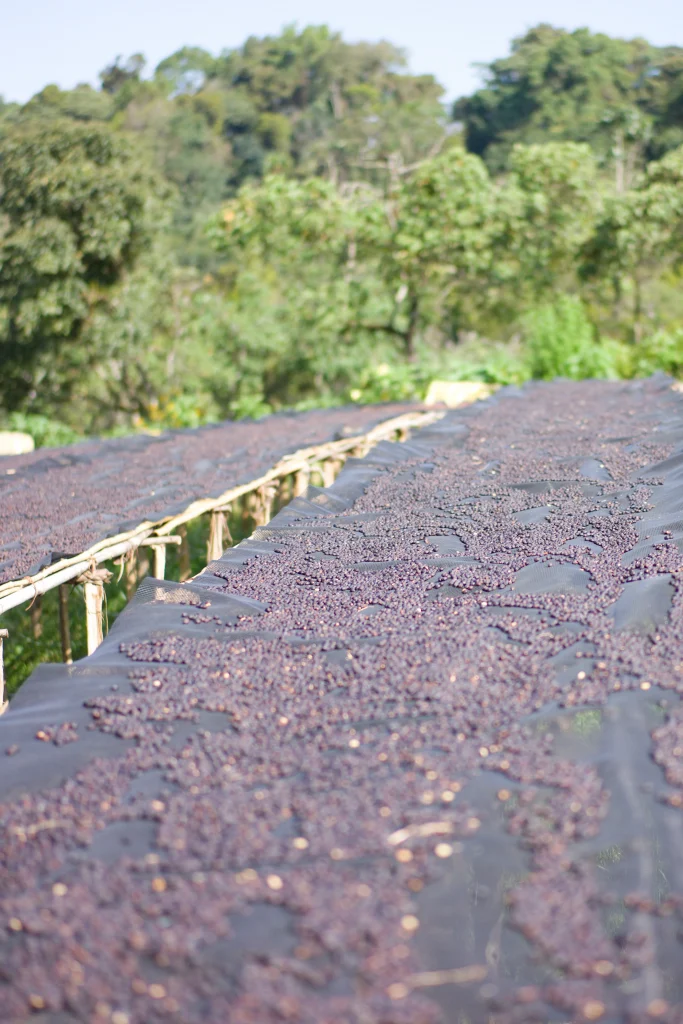
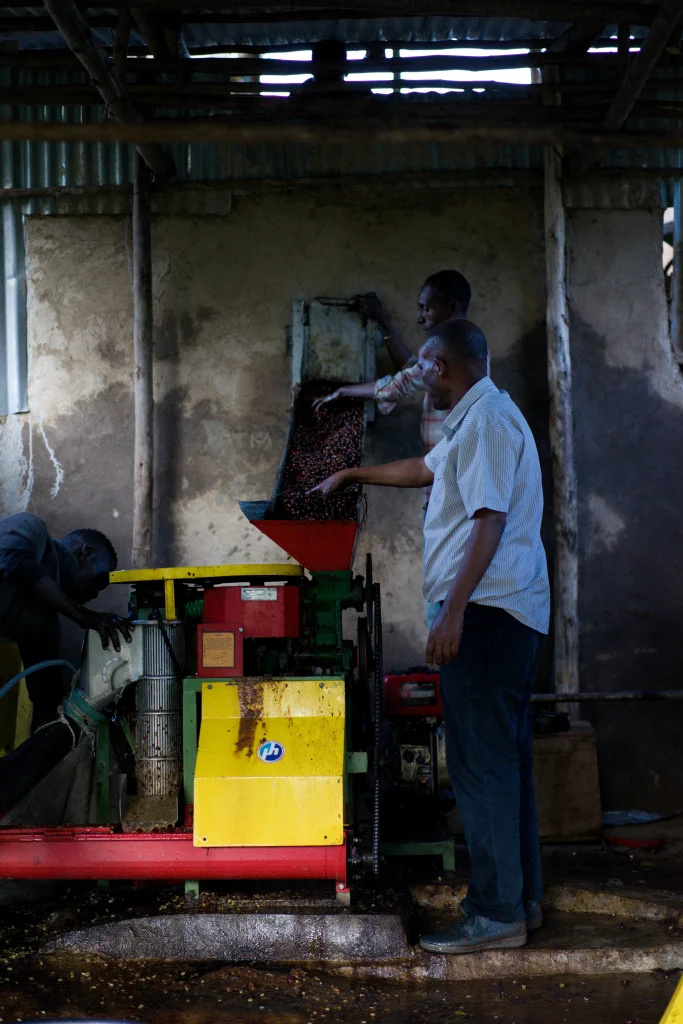
Constructing a Wet Mill
With my desire to mainly buy washed coffees in Ethiopia and also based on our experience with the poor quality naturals mention ed in the above paragraph, I got the idea of helping Negussie with building a wet mill on this farm.
In 2022, when we were to celebrate our 15 year anniversary as a company, we invited all our guests in the store to pay what ever they wanted for the coffee they bought on our day of celebration. The money would go towards building a wet mill at Tatmara. We managed to raise around 5000 USD from our guests and followers and we chipped in a bit ourselves and donated in total 10.000 USD to Negussie in order for him to construct the wet mill. Unfortunately due to inflation and ever rising prices the project ended up costing 16.000 – 17.000 USD. But with the help of Negussie’s other customer Christophe and his company Terres de Café and in collaboration with Belco, the project was finalised in late 2023.
Not only is it easier to dry the washed coffees, even during rainy periods, but the coffees are tasting floral, complex, sweet and clean and has by far exceeded my quality expectations.
Improving the Coffee Quality
In November 2023 I re-visited the farm and officially handed over the new wet mill together with Christope from Terres de Café, Belco and their team. We were able to go through the production steps and agreed upon a protocol for Negussie to follow in order to try to elevate the quality of his coffees.
As usual there were many small details that could be improved, some with minor and others with major impact on the final quality. A few of the major ones included separation of every daily picking, keeping each daily lot stored in air tight grain pro bags after drying. Tailoring the washed process to fit the logistics and new equipment was also a major part of what we improved.
This meant that I was able to evaluate around 30 samples, each representing a daily picking, cultivar and process. In previous years we had only received 2-3 samples representing many lots that were bulk-blended together. Now with better lot separation we were able to remove the inferior coffees from the higher quality lots and in combination with better processing and drying practices the coffees really cleaned up and became more expressive.
We would not be able to change all of this in such a short time had it not been for the wonderful help and follow up done by Shambe Kena, Fantanesh Keleme and the whole team at Belco in Ethiopia. They made sure Negussie understood and followed the protocols for all the coffees he produced for us.
Below you can go through the slides to learn more about how both the washed and natural processed coffees are made at Tatmara.
